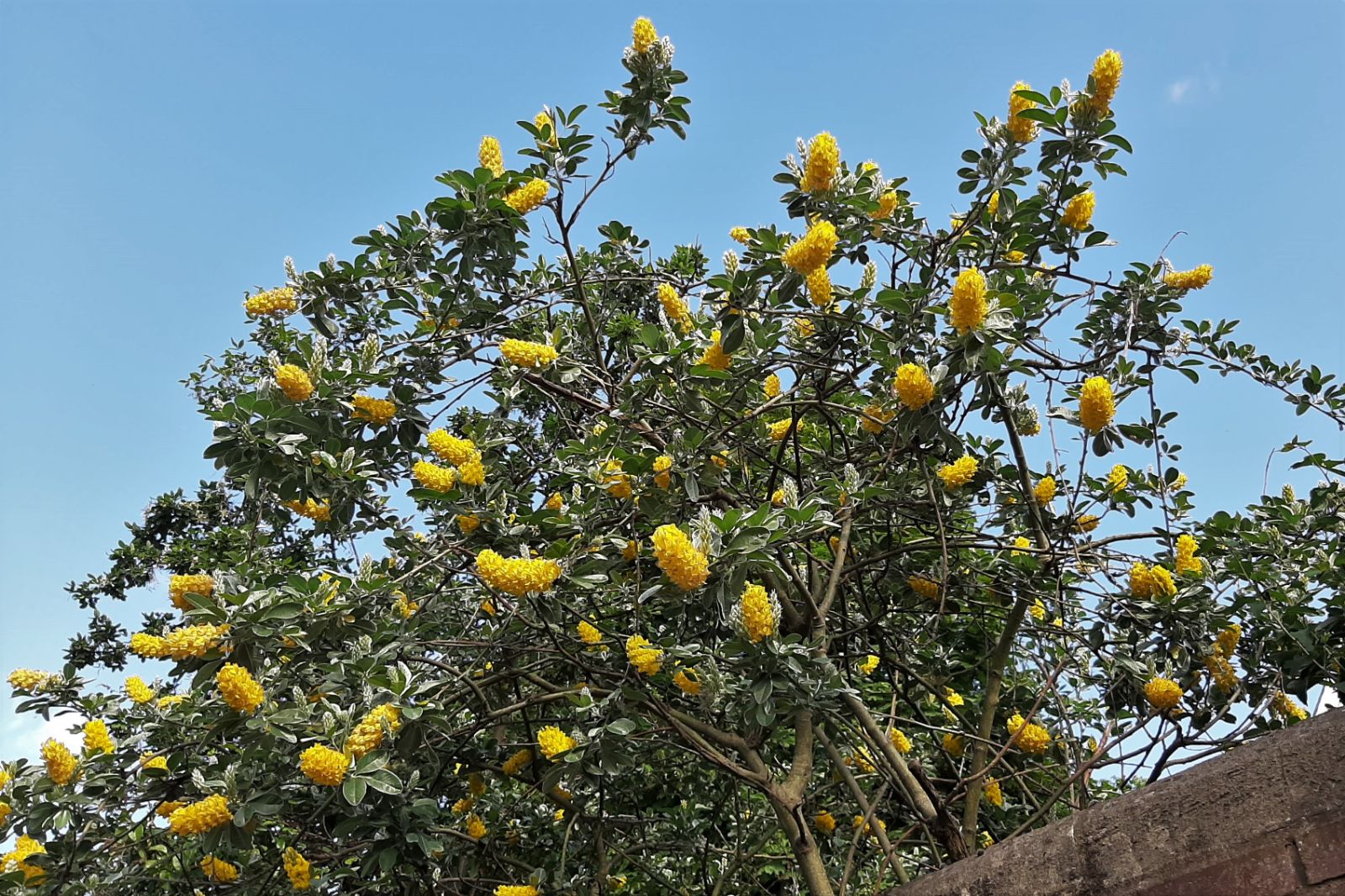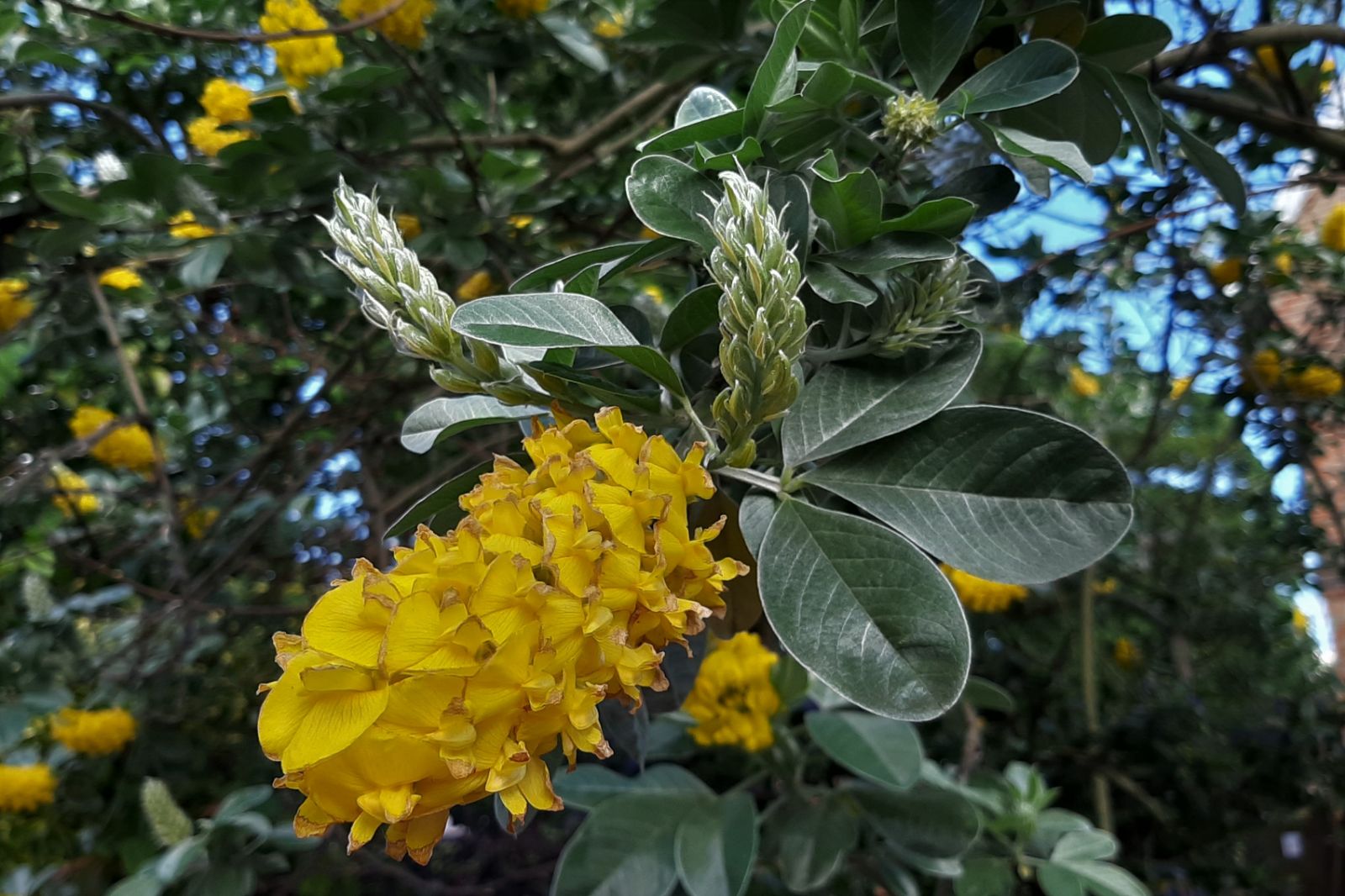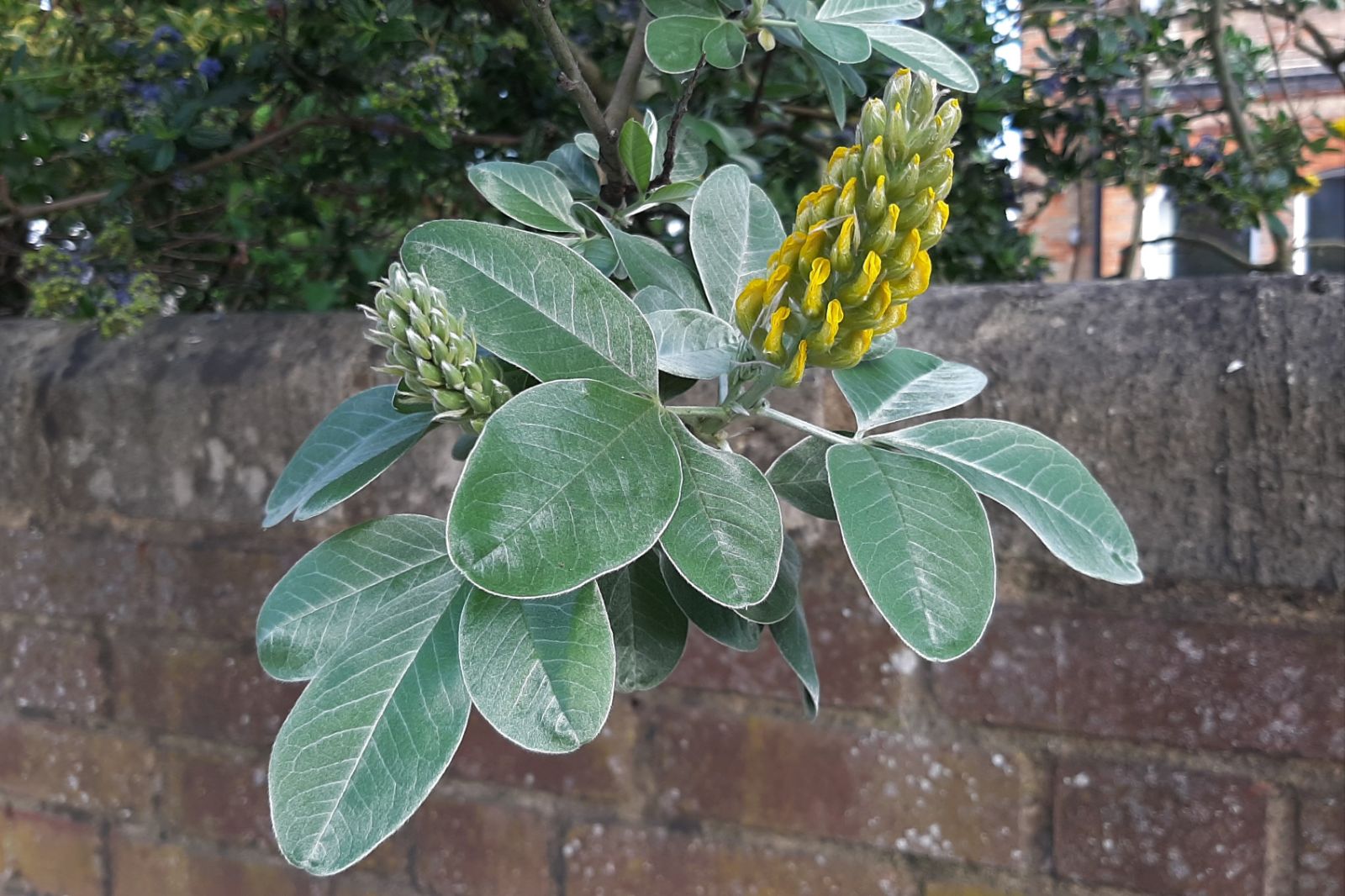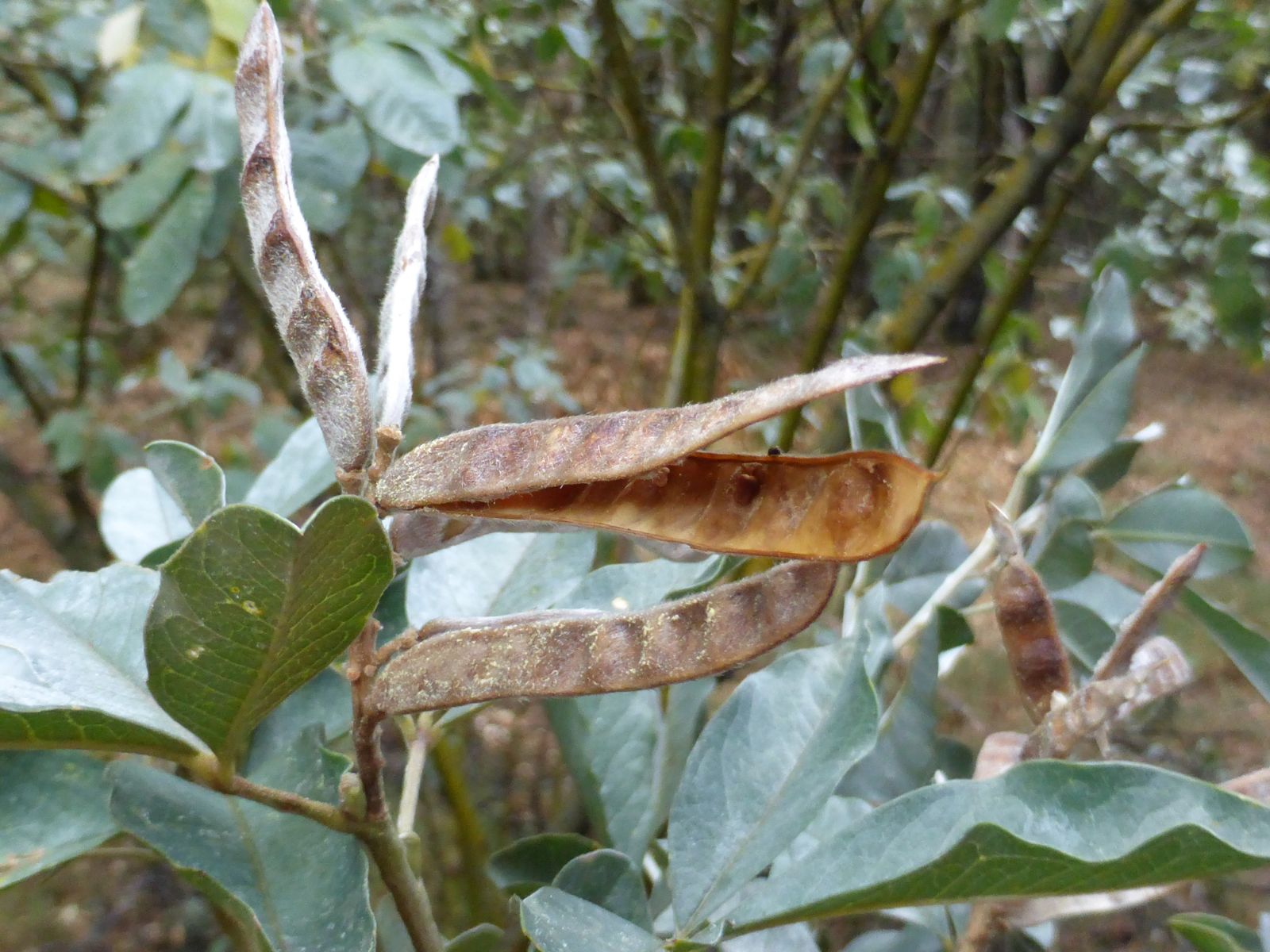Cytisus battandieri
Credits
Article from Bean's Trees and Shrubs Hardy in the British Isles
Recommended citation
'Cytisus battandieri' from the website Trees and Shrubs Online (treesandshrubsonline.
Genus
Synonyms
- Argyrocytisus battandieri (Maire) Raynaud
Other taxa in genus
- Cytisus albus
- Cytisus ardoinii
- Cytisus austriacus
- Cytisus × beanii
- Cytisus × dallimorei
- Cytisus decumbens
- Cytisus demissus
- Cytisus diffusus
- Cytisus emeriflorus
- Cytisus fontanesii
- Cytisus grandiflorus
- Cytisus hirsutus
- Cytisus ingramii
- Cytisus × kewensis
- Cytisus monspessulanus
- Cytisus multiflorus
- Cytisus nigricans
- Cytisus palmensis
- Cytisus × praecox
- Cytisus procumbens
- Cytisus proliferus
- Cytisus purgans
- Cytisus purpureus
- Cytisus racemosus
- Cytisus ratisbonensis
- Cytisus rochelii
- Cytisus scoparius
- Cytisus sessilifolius
- Cytisus × spachianus
- Cytisus supinus
- Cytisus supranubius
- Cytisus tommasinii
- Cytisus × versicolor
An unarmed deciduous shrub 15 ft or more high, of rather erect habit; young shoots stout, 1⁄6 in. in diameter, covered with silky down. Leaves trifoliolate, with a main-stalk 11⁄2 to 21⁄2 in. long; stipules narrowly linear, 1⁄4 to 3⁄8 in. long, soon falling. Leaflets stalkless, obovate, tapered at the base; rounded, notched or mucronate at the apex; 11⁄2 to 31⁄2 in. long, 1 to 11⁄2 in. wide; both surfaces covered with silky white hairs giving them a silvery appearance. Racemes erect or curving upwards, about 5 in. long, terminating young leafy shoots, the flowers closely packed in a cylindrical mass on the upper half. Flowers fragrant, golden yellow, shortly stalked; calyx tubular, very silky, 1⁄3 in. long, 1⁄6 in. wide, with pointed narrowly triangular lobes; standard petal heart-shaped, 1⁄2 in. wide, downy outside; wing petals and keel glabrous, nearly as long as the standard; stamens glabrous; ovary silvery downy, style incurved. Pods erect, stiff, 11⁄2 to 2 in. long, 1⁄4 to 1⁄3 in. wide, hairy, six- or seven-seeded. Bot. Mag., t. 9528.
Native of Morocco on the middle Atlas Mountains at 5,000 to 6,000 ft altitude, where it flowers in June. It was named in 1915 and introduced to this country about 1922. It flowered at Kew under glass in 1928, and planted against a wall outside has never suffered from cold. It seems certain that it is quite hardy near London, for T. Hay grew it fully in the open in Hyde Park without protection. In June 1930, at six years old, when it had attained a height and diameter of 9 ft there, it flowered freely. It also blossomed with the late Sir Oscar Warburg at Boidier, near Epsom, where the garden is situated at 600 ft altitude, and in June 1932 a plant in the open air at Kew flowered beautifully.
In the last quarter century, A. battandieri has become a popular garden shrub. Its hardiness was amply proved in the winter of 1962–3 but, being of rather lax habit, it is perhaps seen at its best on a wall, where it will grow to 12 ft high; in the open ground it is more effective if several plants are grouped together. There is an old specimen in the R.H.S. Garden at Wilsey on Battleston Hill, 12 ft high and as much across (1968) which is completely hardy. Without attention A. battandieri deteriorates and should, especially if grown on a wall, be renewal-pruned by removing old, dishevelled growths after they have flowered and replacing them with younger growths springing from near the base. The same treatment, on a lesser scale, is successful when applied to open-ground plants. In the R.H.S. Garden, this broom only sets seed in warm summers; very occasionally a crop of self-sown seedlings is found.
In foliage A. battandieri is the most remarkable of all brooms, the leaflets being unusually large and the appressed silvery down giving the effect of shot silk; the sheen varies with the angle at which the leaf is held. It grows very vigorously and is a most beautiful addition to hardy shrubs. So distinct is it that a separate generic name, Argyrocytisus, has been suggested for it.
From the Supplement (Vol. V)
† cv. ‘Yellow Tail’. – A selection by Messrs Hillier, with longer spikes than usual, of a brighter yellow.




